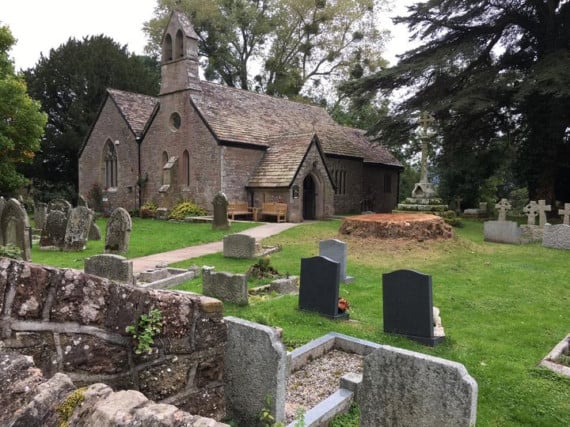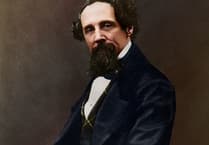VILLAGERS have said farewell to a giant, rare and ancient churchyard tulip tree after it had to be felled because of disease.
Experts from Kew Gardens visited the Wyeside St Dubricius Church in Whitchurch to examine the tree beside the churchyard cross after it showed signs of decay, and diagnosed honey fungus.
Sadly, they said it was beyond saving and should be felled for safety reasons, and last week it was, leaving just a huge stump.
The parish church council posted last December: "A combination of great age and fungal disease has caused a large cavity at the base of the tree trunk."
And in May they announced: "We have permission to fell the big tulip tree which is seriously affected by disease, but this has to wait until the end of the nesting season."
Emma Curtis posted on a Facebook thread about the tree: "Sadly the tree was diseased, and the team at the church did everything to try to save it.
"Several tree experts including those from Kew Gardens were brought in. It’s a massive shame to lose any tree, this one more than most."
Margaret Scotford added: "So sad, the tree was a talking point on the boat trips on the river."
But it’s not the end of the churchyard’s tulip tree history, as Joy Bowen added: "A replacement was planted in 1988 as they knew there were problems then."
Tulip trees, a form of white Virginia Poplar, were first imported from North America in 1656 by John Tradescant the Younger, a gardener to Charles I.
Its large white flowers, of up to four inches across, added to the beauty of the 13th century setting when the tree flowered in June and July.
The flowers are tulip-shaped with petals of greenish-white with an orange coloured spot at the base, and numerous orange-yellow stamens.
It was originally named after the poplar because the leaves flutter similarly on their long slender stems.
North American Indians called the tulip tree ’Canoe Wood’ since boats to carry up to 20 people could be hollowed out of a single log.
In its native habitat the tree grows to a height of over 150 feet and in this country specimens of over 100 feet are known.
The church is named after St Dubricius, a 6th-century holy man who lived in the local region.
Its churchyard includes the Gwillam family tomb enclosure, built in 1744.
The Gwillams owned the nearby Old Court from 1600 until 1898, and the enclosure includes the family of Elizabeth Posthuma Gwillim, wife of General John Graves Simcoe,the first Governor of Upper Canada who founded the city of Toronto in 1793.





Comments
This article has no comments yet. Be the first to leave a comment.